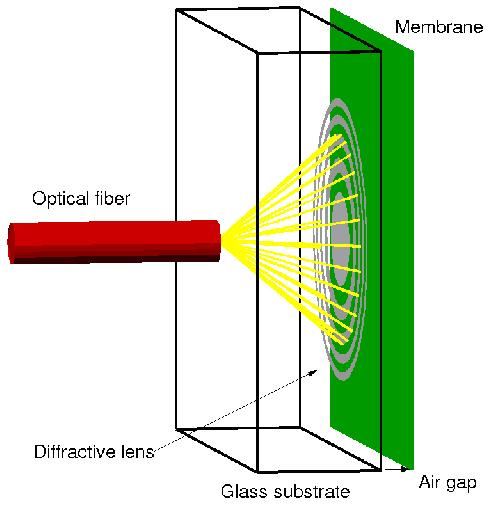An optical microphone consists of a membrane that is deflected by sound pressure or an acoustic signal, where the movement of the membrane is measured by the change in transmitted light intensity due to diffraction or interference. The two methods developed are illustrated in fig. 1.
|
a) |
b) |
|
|
Fig. 1. Illustration of the principles behind 2 different optical microphones developed at SINTEF. a) is based on a Fabry-Perot resonator with a built-in photodetecting pn-junction, and b) is based on modulating the efficiency of a diffractive lens.
The sensors have noise level and sensitivity comparable to a professional ½” condenser microphone. Lab models of the optical sensors have been tested against a Bruel & Kjær microphone with a Norsonic N-114 analyser. Fig. 2 shows the output frequency specter for a 1.1 kHz acoustic signal.
Applications:
- The sensor can be used as a microphone or a pressure sensor, or with modifications as an accelerometer or a gyro.
- The fiber-based diffractive lens microphone is suited for demanding applications such as nuclear radiation, medicine and areas with danger of explosion.
- The Fabry-Perot microphone is well suited for high performance applications where cost is important, such as hearing aids, microphone arrays, videoconference equipment and home electronics.
Related articles:
Optical microphones based on a modulating diffractive lens
Sagberg, H.; Sudbo, A.; Sogaaard, O.; Bakke, K.A.H.; Johansen, I.R.
Photonics Technology Letters, IEEE
Volume 15, Issue 10, Oct. 2003 Page(s):1431 – 1433
|
|
|
Fig. 2. The 1.1 kHz frequency spectrum. The Signal to Noise ratios are comparable except at low frequencies, where the prototype microphones pick up mechanical vibrations from the building because the membranes in these lab models are not attached directly to the substrates. |



